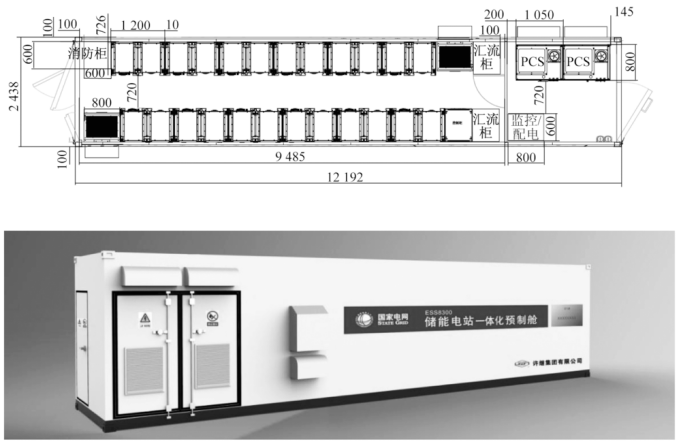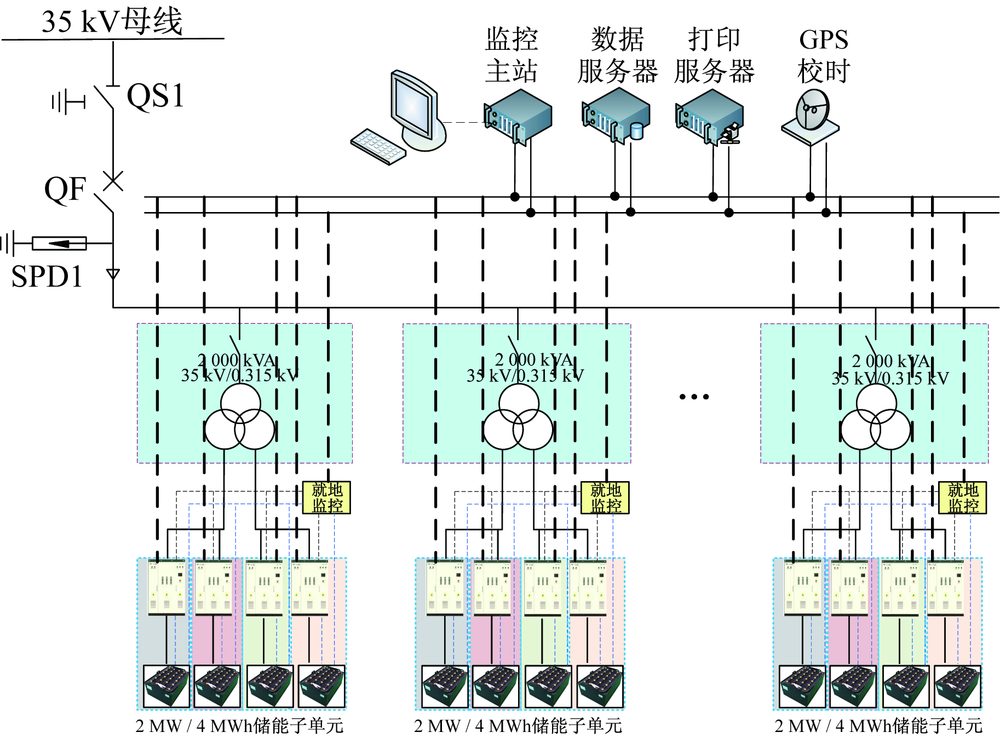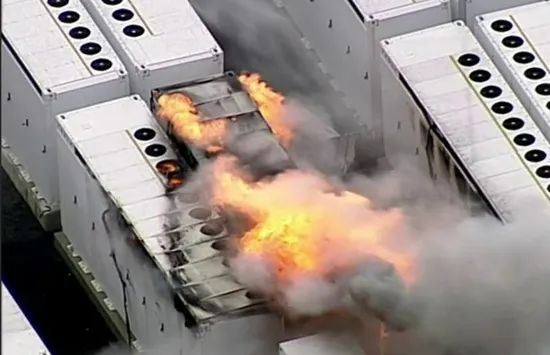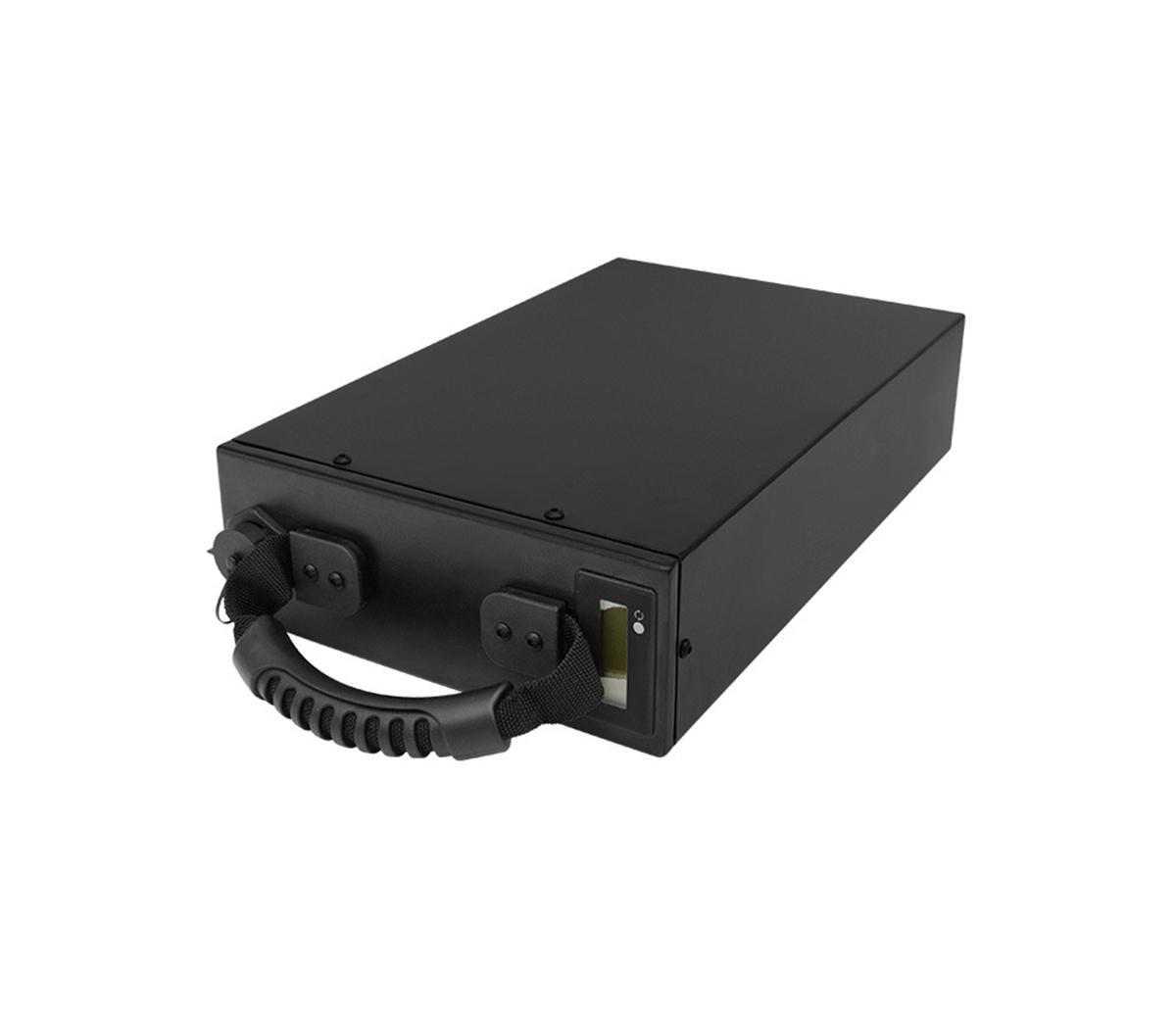Lithium battery energy storage system is an important technology and basic equipment to cooperate with the use of clean energy, support distributed energy storage, and new power systems. It is mainly characterized by superior comprehensive performance and the use of lithium ion batteries. Of course, the energy storage system can be divided into two categories: home energy storage and grid energy storage. Among them, the energy storage system at the grid level is called an energy storage power station.
The energy storage system has ushered in explosive growth in the past two years. This means that there are more and more potential safety hazards, and we often see news about safety accidents of energy storage systems in the news. As a professional manufacturer with nearly 20 years of R&D and manufacturing of lithium battery energy storage systems, SES Power has always put safety first, even if our products use high-quality square lithium iron phosphate batteries, such as with Bluetooth Or lead-acid replacement products with RS485 communication function (lithium iron phosphate battery 12V100Ah, 12V200Ah, 24V100Ah), high current (2000A) start-up lithium battery, UPS high voltage lithium battery system (up to 860V), 3Kw~20Kw off-grid, grid-connected, island Lithium battery energy storage system, wall-mounted home energy storage system 48V100Ah, 48V200Ah, stacked energy storage system (single is 51.2V100Ah, supports up to 15 stacks) and so on.
We are full of confidence in the development of the energy storage industry. Let us sort out the most powerful branch in the energy storage system series - energy storage power station, and its safety knowledge.
A: What is an energy storage power station?
The energy storage power station is actually a power station set up to adjust the peak and valley power consumption problem.

As we all know, the electricity consumption of residents for production and living will fluctuate greatly within 24 hours due to people's living habits. Much more electricity is used during the day and before 12pm than after 12pm. Although the power consumption can be adjusted by controlling the power generation of the power plant, it is still unable to adapt to such a large change, and a lot of electricity is wasted.
Therefore, the establishment of energy storage power stations, simply put, is to store the electricity that we have to waste during the low-peak period of electricity consumption, and release it into the grid again during the peak period of electricity consumption to achieve the purpose of energy saving.
B: Safety is always a big challenge for the energy storage industry?
Electric power experts pointed out that the overall safety of energy storage power plants includes electrical safety, fire safety, chemical safety and mechanical safety.

Different forms of energy storage have different safety risks. For example, lithium-ion battery energy storage, sodium-sulfur battery energy storage and hydrogen energy storage need to focus on their fire safety, flow battery energy storage needs to focus on chemical safety, and flywheel energy storage requires attention. Focus on machinery safety.
Lithium-ion battery energy storage power station is the largest number of energy storage power stations at home and abroad, and it is also the energy storage power station that is most likely to catch fire. Since 2017, more than 30 fire accidents have occurred one after another, causing heavy casualties or property losses, which has aroused the industry's attention to the fire safety of energy storage.
The fire process of an energy storage power station is a process of evolving from local hidden dangers to failure events, and the hidden dangers and evolution of safety risks exist in any of the whole life cycle processes of the energy storage power station, such as equipment selection, system integration, installation and commissioning, operation and maintenance, and facility scrapping. link.
People in the energy storage industry said that if investors are more concerned about price and cost, risk control and safety of products may be neglected. From the analysis of foreign energy storage power station accidents, accidents are generally accompanied by a lack of supervision.
C: The accident causes of energy storage power stations generally originate from three aspects.
Power experts take lithium-ion battery energy storage as an example to analyze:
The first is the human factor. Energy storage is a high-voltage and high-energy system. During the process of integration, installation, commissioning, and operation, if the on-site personnel make mistakes or improperly handle the scene, safety problems are likely to occur. Construction personnel have strict safety awareness and safety operation training.
The second is the factors of the energy storage system itself, including whether the selected battery has passed the relevant safety standards, whether the health status of the battery system is good, whether the insulation design of the high-voltage system is good, and whether the defects of the battery itself can be found and disposed of in time.
Thirdly, there are factors other than the energy storage system. External electrical and thermal disturbances will affect the energy storage system. Therefore, there are generally requirements for the environment of the energy storage system, such as avoiding excessive ambient temperature.

D: What caused the safety accident in the energy storage power station?
Electricity experts said, generally from two aspects.
One is other sources of non-energy storage systems, because in addition to energy storage systems, energy storage power stations also contain many electrical equipment and ancillary facilities, which are a type of explosion source.
The other is the energy storage system itself, more specifically the energy storage battery: when the energy storage battery is stimulated by external electric and thermal shock sources, the battery will undergo a thermal runaway reaction, releasing a large amount of high-temperature flammable gas-liquid mixture, which encounters external air. The oxygen in it will explode when the conditions are right.
Of course, industry insiders pointed out that the safety management of the power station itself is also very important. For example, consideration should be given to the timely and safe evacuation of personnel in the event of an accident.

E: How to prevent the risk of energy storage power station?
Today, energy storage safety has become one of the key concerns around the world. Because once a fire occurs, not only will the property of the enterprise suffer, but also the life safety of the staff and firefighters will be threatened.
In 2019, an explosion of a battery energy storage project in Arizona, USA, directly injured four firefighters, two of them seriously.
On April 6, 2021, an energy storage system (ESS) of a photovoltaic power station in South Korea caught fire, burning an area of 22 square meters and causing a total loss of about 440 million won. After a preliminary investigation, the relevant departments pointed out that the ignition point occurred inside the energy storage unit, involving a battery supplier.
Some energy storage power stations in China have also experienced fires before. For example, on the afternoon of April 16, 2021, a fire and explosion occurred at a lithium battery energy storage power station on the South Fourth Ring Road in Beijing, resulting in the sacrifice of two firefighters.

Electricity experts said that the safety problem of energy storage power stations is not unsolved. The potential safety hazards and their evolution should be effectively managed and controlled during the entire life cycle of the energy storage power station.
In view of the hidden dangers of energy storage accidents, three preventive measures need to be taken.
The first is to strengthen the safety protection of the energy storage system, prevent or reduce the impact of external stimuli on the battery body, actively suppress the amplification of hidden dangers, prevent the spread of local accidents, and prevent the partial failure of the energy storage system from evolving into a global fire.
The second is to strengthen the detection and early warning capabilities of energy storage power stations. The combustion and explosion reaction of the energy storage battery is sudden, but the external stimulus that triggers the combustion and explosion of the energy storage battery is traceable.
The third is to formulate fault emergency plans and fire prevention measures for different types of energy storage accident hazards, and strictly abide by them, first to ensure the safety of personnel.
F: Conclusion
The industry believes that if the safety hazards are not solved, the pace of user-side energy storage will be slowed down in the short term, and the standardization of energy storage by governments in various countries may be accelerated and strengthened. For the builders, they will pay more attention to the system design of energy storage.
SES Power believes that the next step will be to eliminate inferior suppliers, reduce reliance on price competition, and increase focus on safety.
If you have any questions about the lithium battery energy storage system, you are welcome to contact us.







































